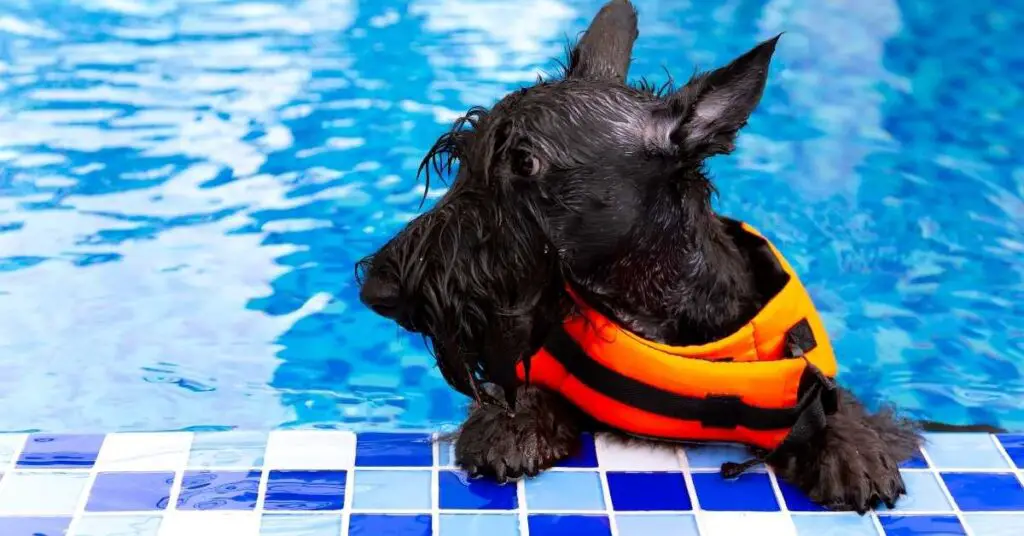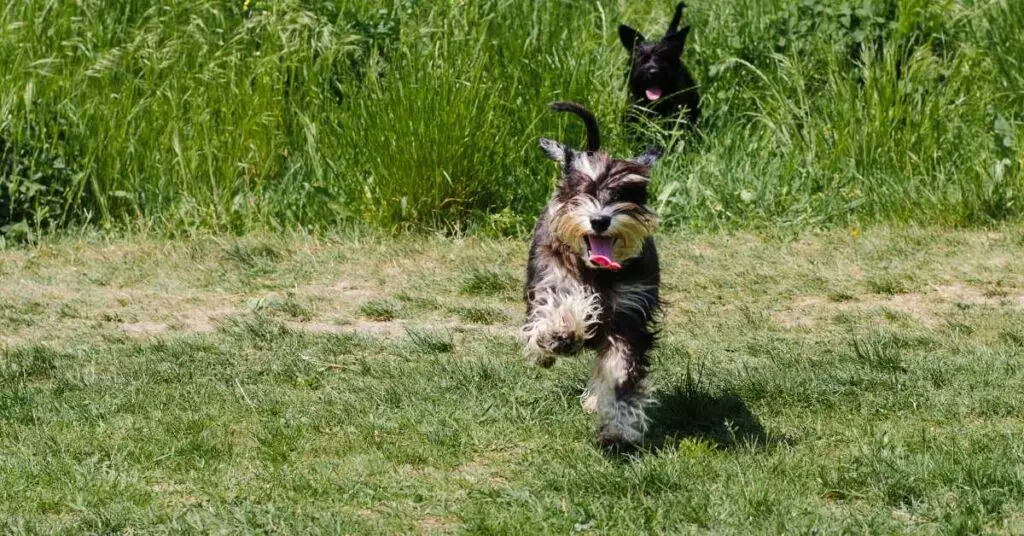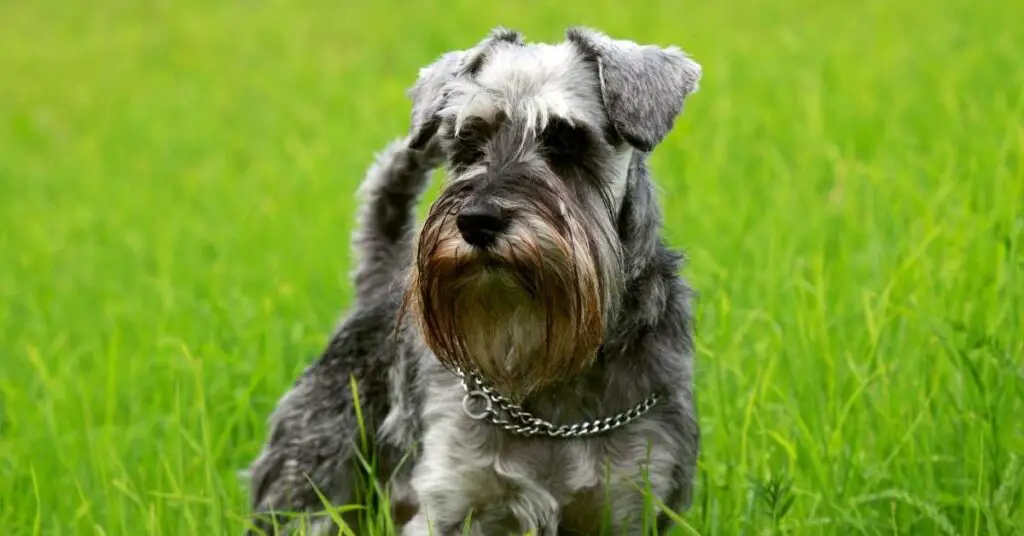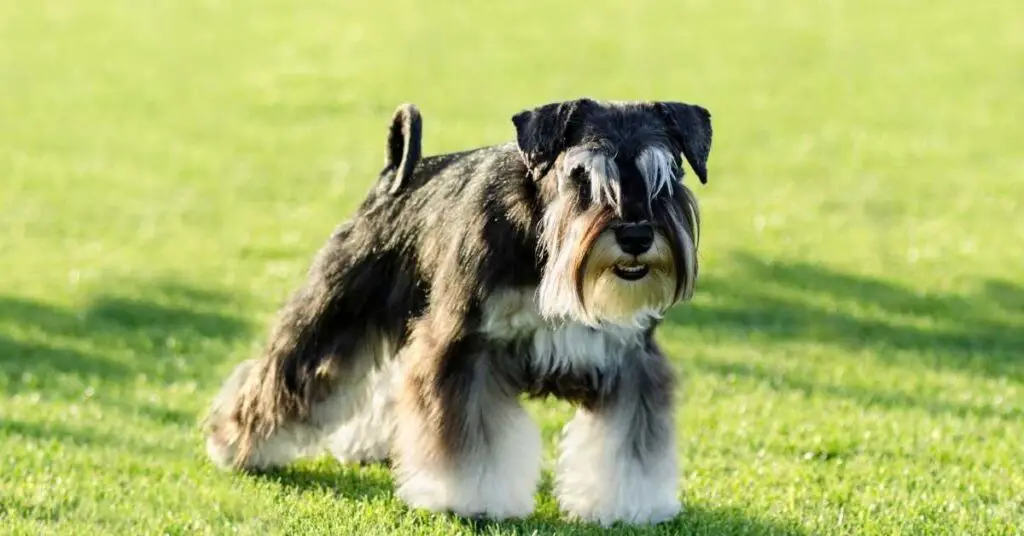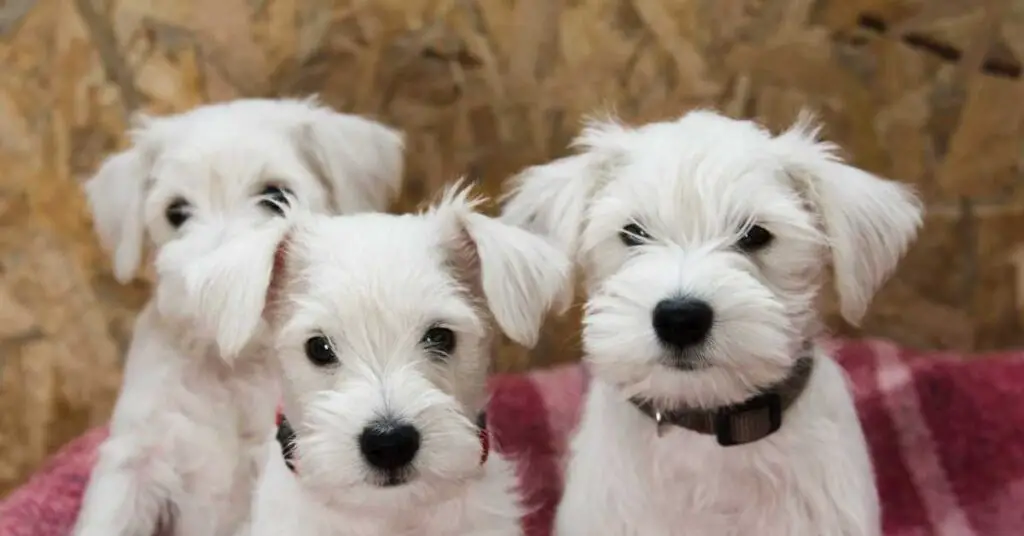Do you want your schnauzer to be the envy of the neighborhood? Then pay attention to their grooming needs! Regular grooming plays a vital role in keeping your furry companion happy and healthy. By maintaining their coat, you can prevent mats, tangles, and unpleasant odors.
But how often should you groom your schnauzer? Well, it depends on a few factors. The length and texture of their coat, their lifestyle, and their individual needs all play a part in determining the ideal grooming frequency.
In this guide, we will break down all the essential information you need to know about grooming your schnauzer, so you can give them the love and care they deserve.
The Importance of Regular Grooming
To maintain the health and appearance of your Schnauzer, it’s crucial to groom them regularly. Regular grooming not only keeps your Schnauzer looking their best, but it also has numerous benefits for their overall well-being.
One of the main advantages of professional grooming services is that they have the expertise and experience to handle your Schnauzer’s specific grooming needs. They can ensure that your Schnauzer’s coat is properly cleaned, trimmed, and styled, which helps prevent matting and keeps their skin healthy. Additionally, professional groomers can check for any signs of skin issues or health problems during the grooming process.
When it comes to choosing the right grooming tools for your Schnauzer, it’s important to consider their specific coat type and grooming requirements. Opt for high-quality tools such as slicker brushes, comb, and clippers that are designed for Schnauzers’ wiry coats. Regular grooming with the right tools will help keep your Schnauzer’s coat in optimal condition, promoting their overall health and well-being.
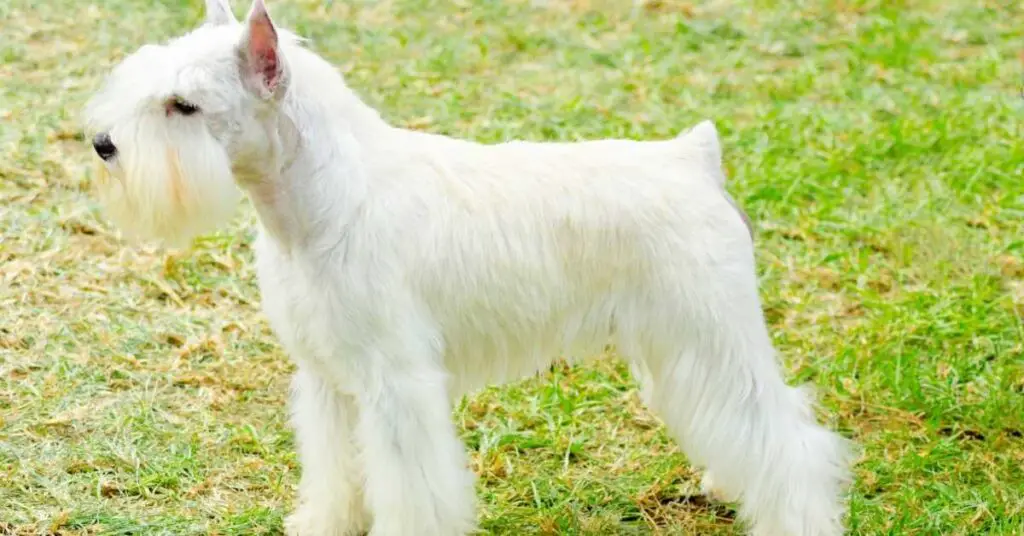
Understanding Schnauzer Coat Types
Understanding the Schnauzer’s coat types is essential for maintaining their grooming needs. Schnauzers have three main coat types:
- Wirehaired Schnauzers: These Schnauzers have a dense, wiry, and harsh outer coat. The coat requires regular hand-stripping to maintain its texture and prevent matting. This grooming style involves removing dead hair by hand rather than using clippers.
- Soft Coated Schnauzers: As the name suggests, these Schnauzers have a soft and silky coat. They require regular brushing and occasional trimming to prevent matting and keep the coat looking neat and tidy.
- Giant Schnauzers: Giant Schnauzers have a thick and coarse outer coat with a soft undercoat. Regular brushing is necessary to prevent matting, and occasional hand-stripping may be required for maintaining the coat’s texture.
Common Grooming Challenges: Schnauzers are prone to developing mats and tangles, especially in areas with longer hair. Regular grooming helps prevent these issues and keeps the coat healthy and manageable. Additionally, Schnauzers may require regular ear cleaning and dental care to maintain their overall hygiene.
Understanding the different schnauzer grooming styles and being aware of common grooming challenges will help you keep your Schnauzer looking their best and feeling comfortable.
Factors to Consider for Grooming Frequency
When determining the grooming frequency for your Schnauzer, there are several factors you should consider.
First, you need to take into account the type of Schnauzer coat your dog has. Different coat types have different grooming needs, with wiry coats requiring more frequent grooming than softer coats.
Additionally, you should consider your Schnauzer’s lifestyle and activity level. Dogs that spend a lot of time outdoors or are more active may require more frequent grooming to keep their coat clean and free of tangles.
Finally, you should also consider your own grooming abilities and preferences. Some owners may prefer to take their Schnauzer to a professional groomer every few months, while others may feel comfortable maintaining their dog’s coat at home.
Ultimately, the grooming frequency for your Schnauzer should be based on these factors to ensure their coat remains healthy and well-maintained.
Recommended Grooming Schedule for Puppies
Consider the grooming needs of your Schnauzer puppy based on their age and coat type.
Here is a recommended grooming schedule for your little furry friend:
- Brushing: Start by brushing your puppy’s coat at least once a week. This will help remove any loose hair and keep their coat looking neat and tidy. Use a slicker brush or a comb specifically designed for puppies.
- Bathing: Puppies generally don’t need frequent baths, as it can dry out their skin. Aim to bathe your Schnauzer puppy every 6-8 weeks, or as needed. Use a gentle puppy shampoo that’s specifically formulated for their sensitive skin.
- Nail trimming: Trim your puppy’s nails every 2-3 weeks to prevent them from becoming too long and causing discomfort. Use a pair of dog nail clippers and be careful not to cut the quick (the blood vessel inside the nail).
- Ear cleaning: Check your puppy’s ears regularly for any signs of wax buildup or infection. Clean their ears once a month using a recommended ear cleaning solution and cotton balls. Be gentle and avoid inserting anything deep into their ear canal.
Ideal Grooming Frequency for Adult Schnauzers
To maintain your adult Schnauzer’s grooming needs, it’s recommended that you groom them regularly. Adult Schnauzers typically require grooming every 4 to 6 weeks to keep their coat clean and healthy.
It’s important to have the right grooming tools for this task. Make sure you have a slicker brush to remove loose hair and prevent matting, as well as a comb to detangle any knots. Additionally, invest in a pair of grooming scissors to trim the hair around their face and paws.
When grooming your adult Schnauzer, it’s crucial to avoid common mistakes. One of them is cutting their hair too short, as it can lead to sunburn and skin irritation. Another mistake is neglecting their ear hygiene, so remember to clean their ears regularly to prevent infections.
Tips for DIY Grooming at Home
For DIY grooming at home, start by gathering the necessary tools and supplies. Here are four essential items you’ll need for grooming your Schnauzer:
- Grooming clippers: Invest in a high-quality pair of clippers designed for dog grooming. Look for ones with adjustable blades to achieve different lengths.
- Slicker brush: This brush is perfect for removing tangles and mats from your Schnauzer’s coat. It has fine, short wires close together to gently remove loose hair and debris.
- Ear cleaner: Schnauzers are prone to ear infections, so a good ear cleaner is crucial. Look for one that’s gentle, non-irritating, and specifically formulated for dogs.
- Styptic powder: Accidents can happen, and if you accidentally nick your dog’s nails during trimming, styptic powder helps to stop any bleeding quickly.
Signs That Your Schnauzer Needs Professional Grooming
If your Schnauzer’s coat is consistently matted and difficult to manage, it may be time to schedule a professional grooming appointment. While regular grooming at home is important, there are certain warning signs that indicate the need for professional help.
One common sign is excessive shedding that can’t be controlled with regular brushing. This could be a sign of an underlying skin issue that needs to be addressed by a professional groomer.
Another warning sign is the presence of tangles and knots that can’t be easily untangled. These can cause discomfort and pain for your Schnauzer if left untreated.
Additionally, if you notice any changes in your dog’s skin, such as redness, irritation, or dryness, it’s best to consult a professional groomer. They can identify and address any potential skin problems that may arise from common grooming mistakes.
Frequently Asked Questions
What Are the Different Grooming Tools and Products Needed for Grooming a Schnauzer?
To groom your schnauzer, you’ll need grooming tools like a slicker brush, comb, and electric clippers. Grooming products like shampoo, conditioner, and ear cleaner are also essential. Regular grooming helps keep your schnauzer looking and feeling their best.
Can Schnauzers With Allergies or Sensitive Skin Be Groomed as Frequently as Other Schnauzers?
If your schnauzer has allergies or sensitive skin, they may require less frequent grooming to minimize irritation. Consult with a veterinarian to develop a grooming schedule that suits their needs and helps manage their allergies and sensitive skin effectively.
Are There Any Specific Grooming Techniques or Practices That Should Be Avoided for Schnauzers?
When grooming your schnauzer, be mindful of specific techniques to avoid. Common grooming mistakes include using harsh or abrasive tools, pulling on their fur, and neglecting their sensitive areas.
How Long Does It Typically Take to Groom a Schnauzer?
When grooming a schnauzer efficiently, it typically takes about 1 to 2 hours. To save time, avoid common mistakes like rushing or pulling their hair. Remember, a well-groomed schnauzer is a happy schnauzer!
Are There Any Health Benefits Associated With Regular Grooming for Schnauzers?
Regular grooming for schnauzers has several health benefits. It can help prevent skin issues by removing dirt and excess oil, promoting healthier skin. Additionally, grooming allows for early detection of any potential skin problems or abnormalities.
Conclusion
In conclusion, regular grooming is essential for maintaining the health and appearance of your Schnauzer. The frequency of grooming depends on factors such as coat type, age, and personal preference.
For puppies, a grooming schedule should be established early on to get them accustomed to the process.
Adult Schnauzers generally benefit from grooming every 4-6 weeks. However, it’s important to monitor your Schnauzer’s coat and behavior to determine if professional grooming is needed.
With proper care and attention, your Schnauzer will look and feel their best.

